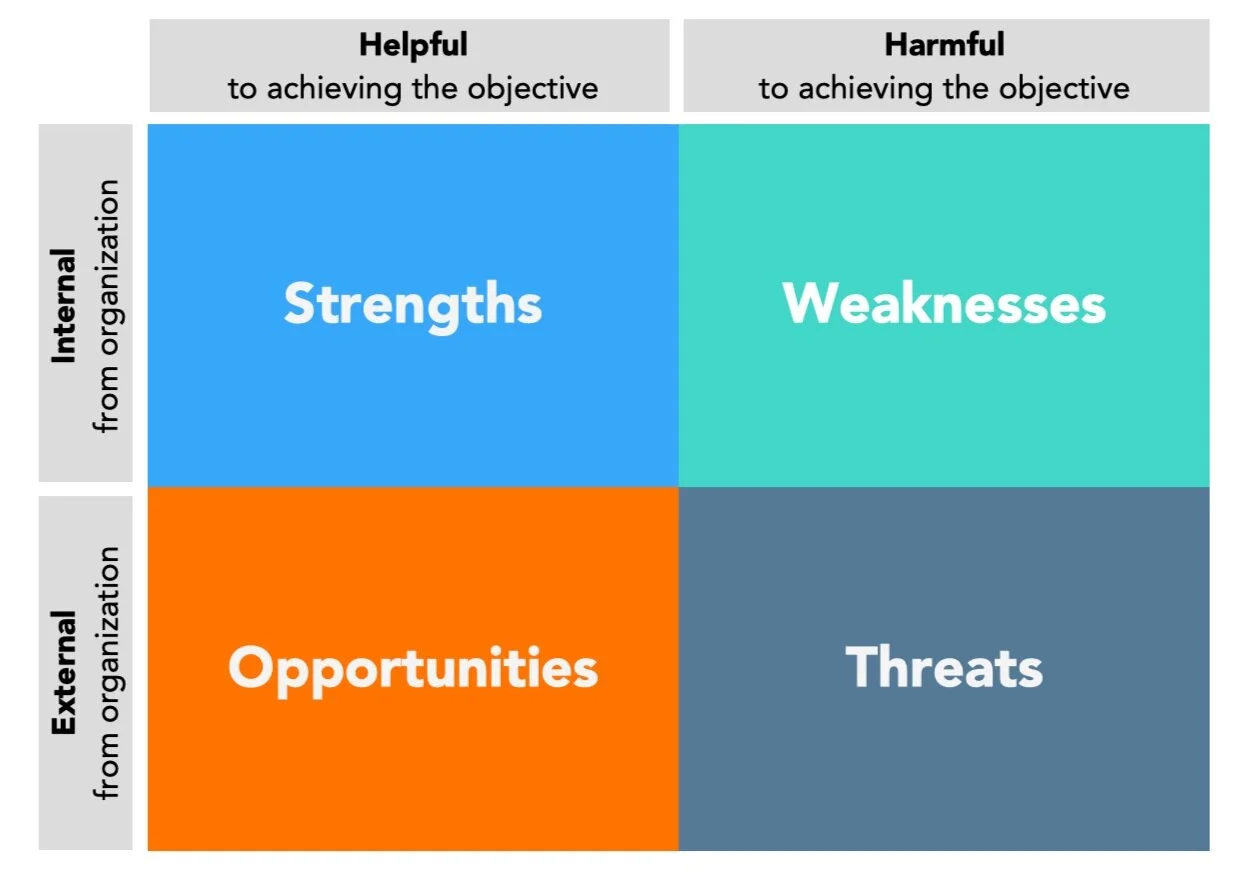Description
The purpose of a SWOT Analysis is to evaluate a brand’s current position relative to achieving a specific objective. SWOT stands for Strengths, Weaknesses, Opportunities, and Threats. For marketers, a SWOT can be a useful tool as part of a strategic planning process. It requires identifying internal Strengths and Weaknesses that either help or harm your ability to achieve a stated objective. It also involves identifying external Opportunities and Threats that either provide an advantage or place a barrier to achieving the objective. A two-by-two matrix is used to build the SWOT Analysis. Once completed, you can better understand your competitive position and identify potential actions to take to exploit opportunities or mitigate threats.
Questions
The SWOT Analysis helps to answer marketing questions like:
What internal assets do we have or do we need to compete?
How are we positioned to take advantage of future opportunities?
What risks are on the horizon that we need to address now?
Steps
Identify the objective that will frame your SWOT Analysis. All factors listed in the SWOT need to have a material impact on your ability to achieve this objective (e.g. grow market share by 20%).
Considering this objective, identify the most important internal factors that increase your brand’s ability to achieve it. For example, brand equity or intellectual property. Write these in the Strength quadrant.
List the most important internal factors that reduce your brand’s ability to achieve the same objective. For example, reputation issues or gaps in expertise. Write these in the Weaknesses quadrant.
List the most important external factors that are favourable to you and that you may exploit to your advantage. For example, new markets or consumer trends. Write these in the Opportunities quadrant.
List the most important external factors that present challenges to your brand and that you may need to mitigate to achieve your objective. For example, new competitors or declining economy. Write these in the Threats quadrant.
Considerations
Once completed, look for connections between internal and external factors to find strategic priorities
Complete as a team to align on an objective and build a common understanding of competitive position
Update your SWOT Analysis when your objective, brand, or marketplace changes significantly
References
The SWOT Analysis is credited to Albert S. Humphrey

